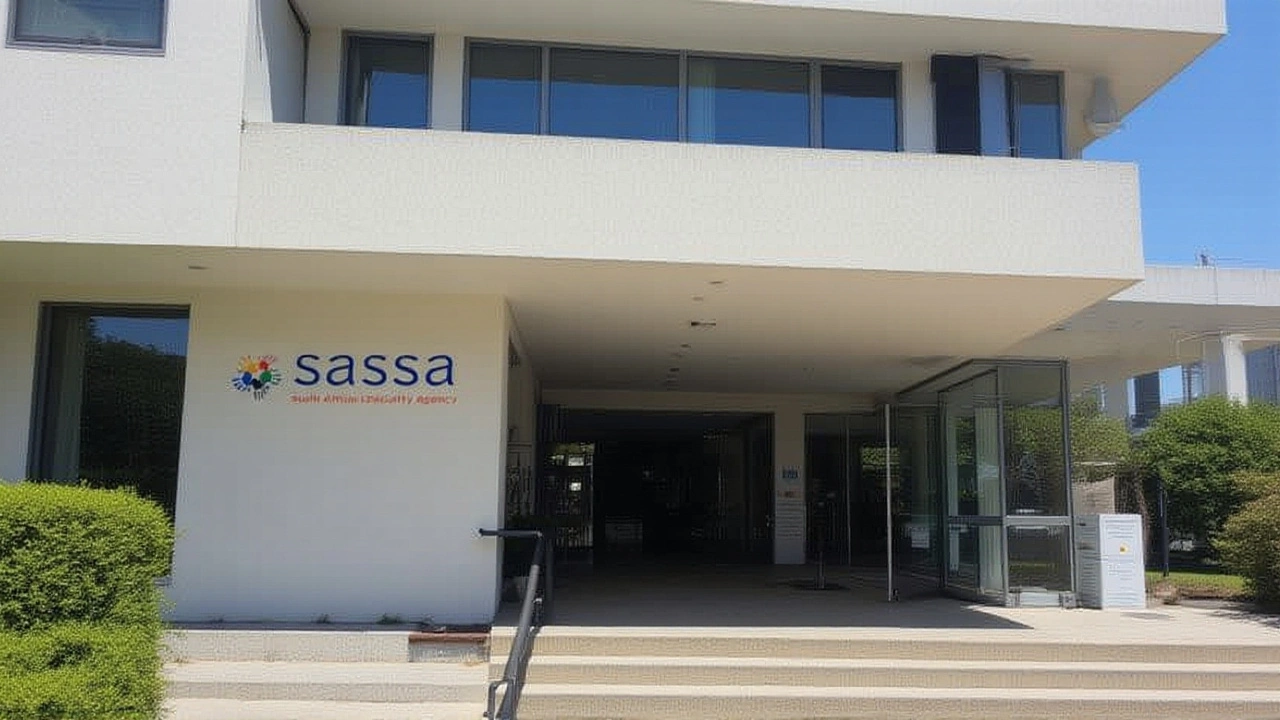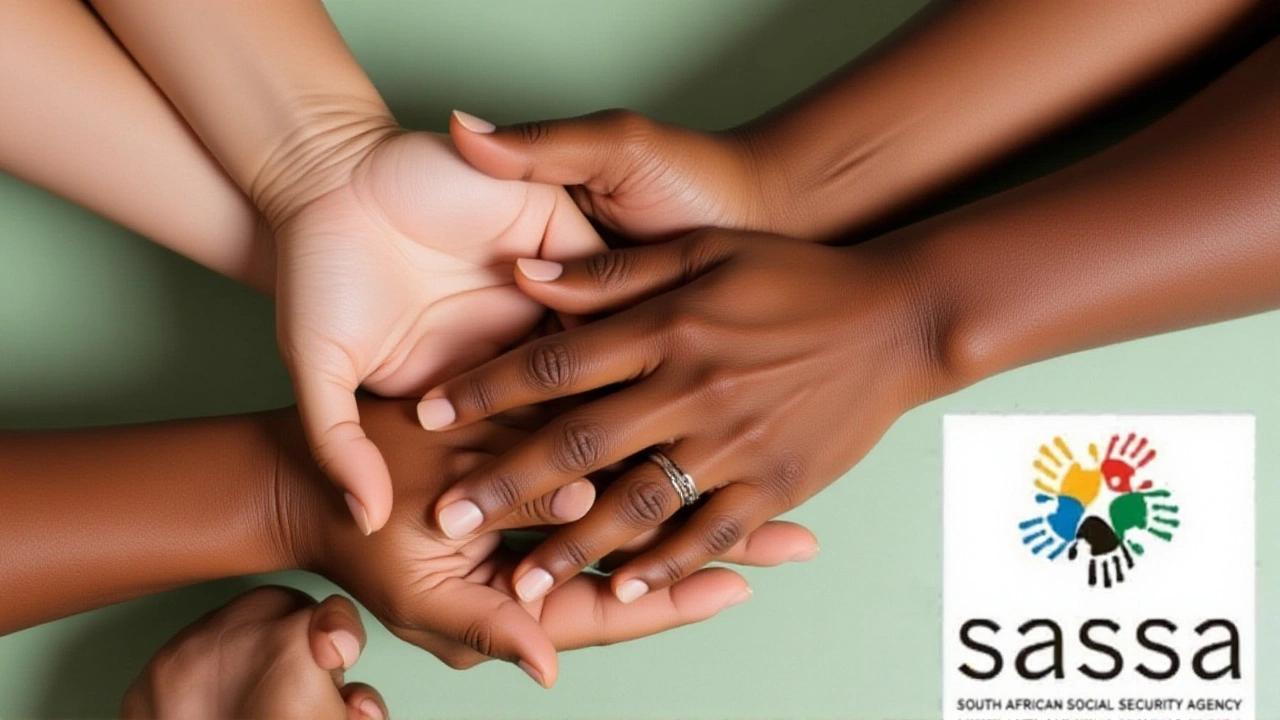When SASSA rolled out October 2025 grant payouts on Thursday, October 2, the country’s most vulnerable citizens suddenly felt a modest but welcome boost in their wallets. The increase – a flat R10 across most social aid categories – follows Finance Minister Enoch Godongwana’s budget pledge earlier this year, and the agency used the moment to warn of a surge in fraud attempts targeting desperate recipients.
Payment Schedule and Amount Increases
The October 2025 grant payment cycleSouth Africa follows a tightly choreographed timetable. Older Persons Grants hit accounts on Thursday, October 2, the Disability Grant followed on Friday, October 3, and a batch covering Children’s Grants and all remaining categories landed on Monday, October 6. For those waiting on the Social Relief of Distress (SRD) grant, the window remains open from October 20 to 27.
Amount-wise, the changes are straightforward:
- Older Persons Grant: from R2,310 to R2,320
- Older Persons Grant (75+): from R2,330 to R2,340
- War Veterans Grant: from R2,330 to R2,340
- Disability Grant: from R2,310 to R2,320
- Care Dependency Grant: from R2,310 to R2,320
- Child Support Grant stays at R560
- Foster Care Grant remains R1,250
- SRD Grant unchanged at R370
“This reaffirms the government’s commitment to protecting the most vulnerable in society,” said SASSA CEO Themba Matlou, underscoring that the raise is meant to cushion households against lingering inflation.
SASSA’s Operational Shift After Postbank Exit
Another piece of news that could easily slip past casual observers is the expiry of SASSA’s contract with Postbank on September 30, 2025. The agency insists the transition will be seamless: SASSA cards continue to work at ATMs and retail outlets, but beneficiaries are urged to migrate to personal bank accounts or retailer‑linked payment options before the 19th of the month to avoid hiccups in the next cycle.
Changing payment methods isn’t a bureaucratic nightmare, but it does require a consent form and supporting documents submitted at the nearest SASSA office. Matlou highlighted that the agency is already processing over 19 million transactions a month, so the infrastructure can handle the shift without a glitch.
Fraud Risks and Agency Warnings
Here’s the twist: every time a payment roll‑out is announced, fraudsters circle like sharks. SASSA’s latest advisory is blunt – anyone demanding a fee for grant applications is committing a crime. The agency reported a spike in calls where callers pretended to be SASSA officials, asking for bank details or “processing fees.”
“Any individual or entity offering to assist with social grant applications for a fee is engaging in deceptive and fraudulent behaviour that should be reported immediately,” the statement read. Beneficiaries are reminded to keep PINs and banking details private and to verify any communication directly with SASSA via the official helpline.
Police data from the first two weeks of October show a 12 % increase in reported fraud attempts compared with September, a statistic that underscores the timing of the warning.

Impact on Beneficiaries and Economic Context
While R10 might not seem like a life‑changing sum, for a household surviving on the Child Support Grant (R560) it represents almost a 2 % rise in disposable income. In a country where the unemployment rate hovers around 32 % and inflation has lingered near 6 % for the past year, even modest increments can make a dent in food and transport costs.
Economists note that the cumulative effect of the R10 uplift across 19 million recipients translates to roughly R190 million injected into the economy each month – a tidy stimulus that filters down to informal markets and small retailers.
Moreover, the timing aligns with the government’s broader social safety net overhaul, which includes plans to digitise payments further and expand the coverage of the Care Dependency Grant.
Looking Ahead: Future Payment Models
Looking forward, SASSA is exploring a phased migration to a fully digital platform, potentially partnering with major South African banks to offer direct deposits. This would reduce reliance on the aging SASSA card system and mitigate fraud vectors tied to physical cards.
Matlou said the agency aims to complete the migration by mid‑2026, but emphasized that any transition will be “gradual, inclusive and without jeopardising the current flow of funds.” In the meantime, the October payouts serve as a reminder that government‑led cash transfers remain a lifeline for millions.
Frequently Asked Questions
How does the R10 increase affect my monthly budget?
Even a modest R10 rise can ease the strain on essentials like food and transport. For a family receiving the Child Support Grant, the boost represents almost a 2 % increase, which over a year adds up to R120 in extra spending power.
What should I do if a caller asks for money to process my grant?
Report the incident immediately to the nearest police station and to SASSA’s dedicated fraud hotline. The agency stresses that no fee is ever required for grant disbursement, and any request for payment is illegal.
Can I still use my SASSA card after Postbank’s contract ends?
Yes, the cards will continue to work at ATMs and participating retailers for the foreseeable future. However, SASSA encourages you to switch to a personal bank account or retailer‑linked option before the 19th of each month to avoid any future disruptions.
When will the SRD (Social Relief of Distress) grant be paid this month?
SRD payments for October are scheduled between the 20th and 27th. Beneficiaries should check their accounts during this window and can still collect funds at approved retailers if the electronic transfer has not yet posted.
What longer‑term changes are planned for South Africa’s grant system?
SASSA aims to complete a full digital migration by mid‑2026, linking grants directly to beneficiaries’ bank accounts. This shift is expected to speed up payments, reduce fraud, and cut administrative costs, while still keeping cash‑card options alive during the transition period.


deepika balodi
October 1, 2025 AT 18:26The R10 increase might look tiny, but it’s a real morale boost for many.
Coupled with the fraud warnings, it serves as a reminder to stay vigilant.
Priya Patil
October 8, 2025 AT 18:26It’s good to see the government actually delivering on that promise.
Even a modest bump can ease the pressure on food and transport for families on the Child Support Grant.
What matters most is that the money reaches the right people without delay.
The rollout schedule looks solid, so beneficiaries should keep an eye on the dates.
Stay safe and report any shady callers right away.
Rashi Jaiswal
October 15, 2025 AT 18:26Yo, that R10 might not change the world but it’s a win for the hustlers out there.
Those fraudsters are getting desperate, trying to squeeze cash from people who need it most.
Don’t fall for anyone asking for a “processing fee” – it’s a scam.
Just keep your PIN locked and double‑check the official SASSA helpline.
And hey, the new digital push could actually make things smoother if they sort the tech glitches.
Let’s hope the transition to bank accounts doesn’t become another bottleneck.
Maneesh Rajput Thakur
October 22, 2025 AT 18:26Look, the R10 raise is just a façade to distract from the deeper issues plaguing our social safety net.
The government talks big about digitisation, yet the rollout of the new platform has been plagued by delays and opaque contracts.
Every time they announce a payment, a new wave of fraud attempts shows up, which is no coincidence – it’s a symptom of systemic vulnerability.
What they don’t tell you is that the data migration from Postbank to private banks is happening behind closed doors, with no public audit.
There are rumors that some of the shortlisted banks have ties to influential political donors, raising conflict‑of‑interest concerns.
The average citizen has no visibility into how their R10 is being processed, who gets a cut, and where the money actually flows.
Furthermore, the promised “gradual, inclusive” shift to full digital payments could end up marginalising those without smartphone access, widening the digital divide.
All the while, the agencies keep issuing warnings about scammers, but they never address the root cause – the lack of transparent oversight.
It’s also worth noting that the influx of R190 million per month into the economy is a drop in the bucket compared to the billions lost to corruption each year.
Even if the R10 seems helpful, it masks the fact that many grants are still under‑funded and many recipients remain on the brink.
And let’s not forget the bureaucratic nightmare of filling out consent forms for the migration – a process that has historically been riddled with back‑office errors.
In practice, many beneficiaries miss the 19th deadline and end up with delayed payments, causing further hardship.
There’s also an increasing trend of fraudulent “consultants” who claim to have inside connections to expedite the migration, charging fees that clearly violate the law.
These actors thrive because of the lack of clear communication from SASSA, pushing people into desperate corners.
Bottom line: while the R10 bump is a nice headline, it does nothing to solve the entrenched problems of transparency, accountability, and digital exclusion.
ONE AGRI
October 29, 2025 AT 17:26Honestly, reading that long rant made me think about how many of us are just trying to get by day‑to‑day.
The government’s fancy talk about digitisation sounds promising, but for many of us, the biggest hurdle is simply remembering to fill out that consent form before the 19th.
If you miss it, you might end up waiting another month for cash that you need for groceries, school fees, or medication.
And while they warn us about scammers, they also keep changing the payment methods without giving clear guidance, which is itself a breeding ground for fraud.
It’s frustrating that we have to constantly chase updates, and the whole system feels like a maze designed for bureaucrats, not the people it’s supposed to help.
Even the promise of a “gradual” shift to full digital payments feels like a delay tactic – a way to keep the old card system running while they figure out where to line their pockets.
In the meantime, the R10 bump is a drop in the ocean compared to the rising cost of basic goods, especially when you factor in inflation and transport costs.
People need more than a token increase; they need real, reliable access to funds without this endless run‑around.
Himanshu Sanduja
November 5, 2025 AT 17:26Totally get where you’re coming from
It’s a real hassle trying to keep up with the deadlines
Maybe we could push for a community guide to help folks navigate the forms
Hope SASSA listens and simplifies the process soon
Kiran Singh
November 12, 2025 AT 17:26R10 up! 🎉
Balaji Srinivasan
November 19, 2025 AT 17:26Appreciate the clear schedule – older persons grant on the 2nd, disability on the 3rd, and the rest on the 6th.
That helps us plan our weekly expenses.
Just keep the communication straightforward.
Hariprasath P
November 26, 2025 AT 17:26Yo fam, sassa’s new card thingy is chill but don’t miss da 19th deadline bro.
if u forget ur docs u might be stuck waitin’ for cash.
still, that R10 raise is a lil’ win for us all.
stay woke and don’t let no fake doc guy hustle u.
Vibhor Jain
December 3, 2025 AT 17:26Oh great, another reminder we’ll all ignore until it’s too late.
Because we love waiting for payments.